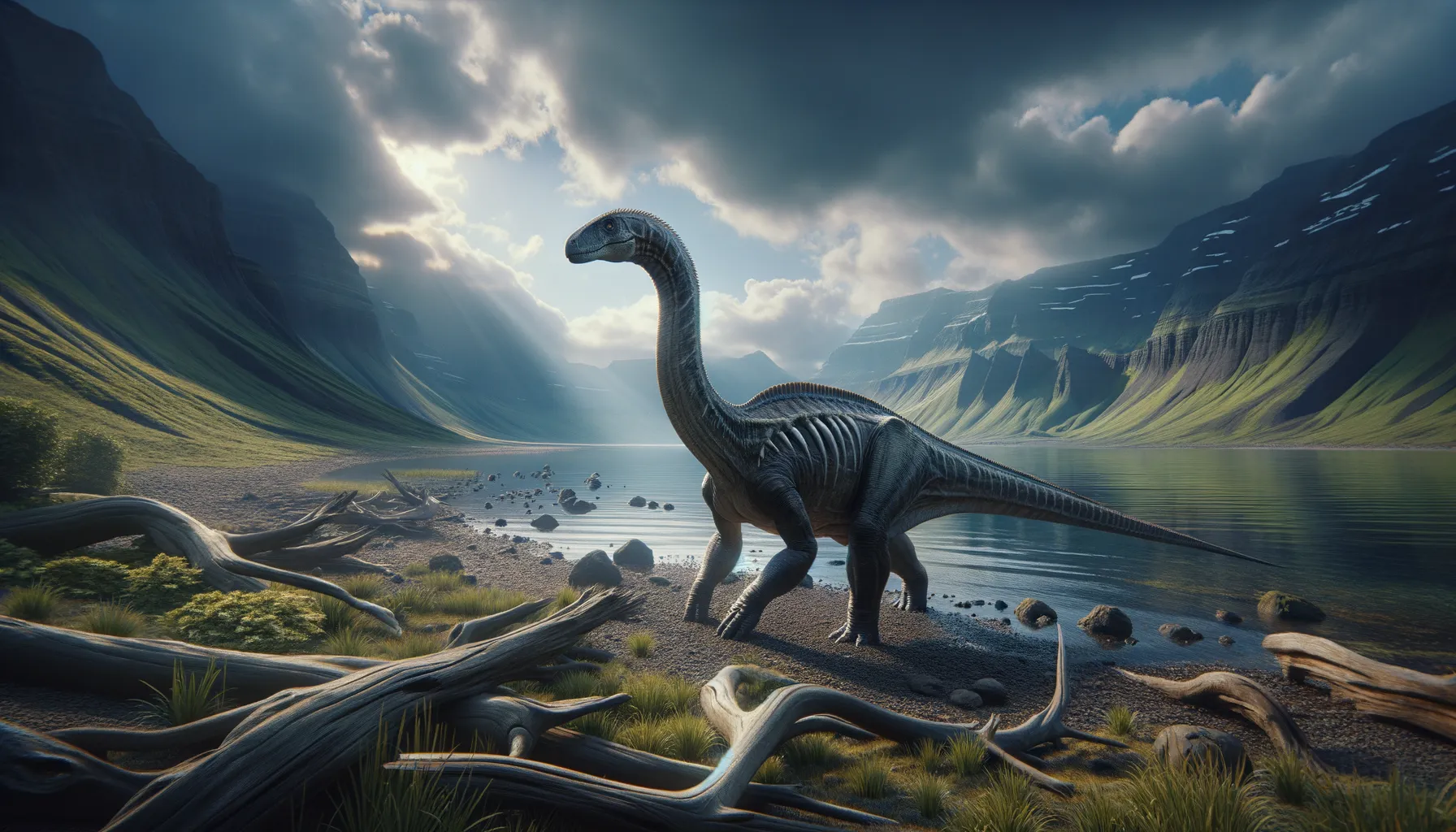
Hypselorhachis
A unique blend of land and water prowess.
Period
Cretaceous
Length
Approximately 8 meters in length.
Height
Roughly 3 meters tall.
Weight
Around 500 kg to 700 kg.
Hypselorhachis was a remarkable dinosaur known for its distinct elongated vertebrae which gave it a unique appearance. It lived during the Cretaceous period and was first discovered in Madagascar. This dinosaur is fascinating for its blend of features that suggest it was both a terrestrial and semi-aquatic creature. Its fossils have provided valuable insights into the diversity of dinosaur ecosystems in Cretaceous Madagascar.
Diet
Hypselorhachis was primarily herbivorous, feeding on a variety of plant materials. Its diet likely consisted of ferns, cycads, and other low-lying vegetation available in its habitat.
Hunting
Being herbivorous, it did not engage in hunting behavior typical of predators. However, it likely foraged through areas rich in plant life, using its height to reach a diverse range of foliage.
Environmental challenges
Living in Madagascar, Hypselorhachis faced challenges such as seasonal changes which could affect food availability. It had to adapt to both dense forest and open plains, maneuvering through various terrains. Predators would have been a constant threat, necessitating alertness and defense tactics.
Speed
Moderate but agile.
Lifespan
Approximately 10 to 15 years.
First discovery
Discovered in Madagascar in 2010.
Fun Facts
- Hypselorhachis is a relatively recent discovery in the world of dinosaurs, with scientists identifying it in the last few decades.
- The name Hypselorhachis means 'high spine', which is a nod to the tall spines on its back, making it rather unique and visually interesting.
- Hypselorhachis lived during the Cretaceous period, which is around 100 million years ago.
- This dinosaur was found in what is now Africa, specifically in the lush habitats that existed there during the Cretaceous.
- Hypselorhachis was likely a herbivore, meaning it fed on plants, which were abundant in its environment.
- Its distinctive high spines may have been used for display to attract mates or to intimidate rivals.
- Though it shared the land with larger dinosaurs, Hypselorhachis carved out a niche of its own, thanks to its specialized features.
Growth and Development
Hypselorhachis likely grew rapidly as a juvenile, as is common with many dinosaur species, to avoid predation. As an adult, it would have had fewer natural threats due to its size. Its development may have involved gradual changes in diet as it progressed from a hatchling to full maturity.
Habitat
Its habitat ranged from lush forests to wide-open plains, giving it a variety of environments to navigate and find food. Water bodies nearby might have been part of its territory, suggesting some semi-aquatic adaptations. These diverse habitats provided both challenges and opportunities for interaction with other species.
Interaction with other species
Hypselorhachis likely shared its habitat with a variety of other dinosaur species, engaging in a dynamic ecosystem. Its size would have afforded it some protection against smaller predators. Additionally, it may have played a role in shaping the vegetation structure by feeding patterns.
Natural lifespan
Hypselorhachis could live about 10 to 15 years in the wild.
Reproduction
Hypselorhachis probably laid eggs in nesting colonies, similar to other large dinosaurs. Parental care might have been present, at least until hatchlings were capable of foraging for themselves. This strategy ensured the survival of the young in a predator-rich environment.
Social behaviour
While specific social behavior is unknown, it may have gathered in small groups, especially during migration or foraging. These groups could have provided mutual protection and facilitated reproductive opportunities. The social structure of Hypselorhachis likely shifted according to environmental pressures.
Fossil locations
Hypselorhachis fossils have been primarily found in Madagascar, contributing valuable data to our understanding of Cretaceous ecosystems. The region's unique geology and prehistoric climate have preserved many such fossils, offering insights into the biodiversity of the period. Its discovery in Madagascar suggests it may have been endemic to this area, providing clues about ancient continental arrangements.
